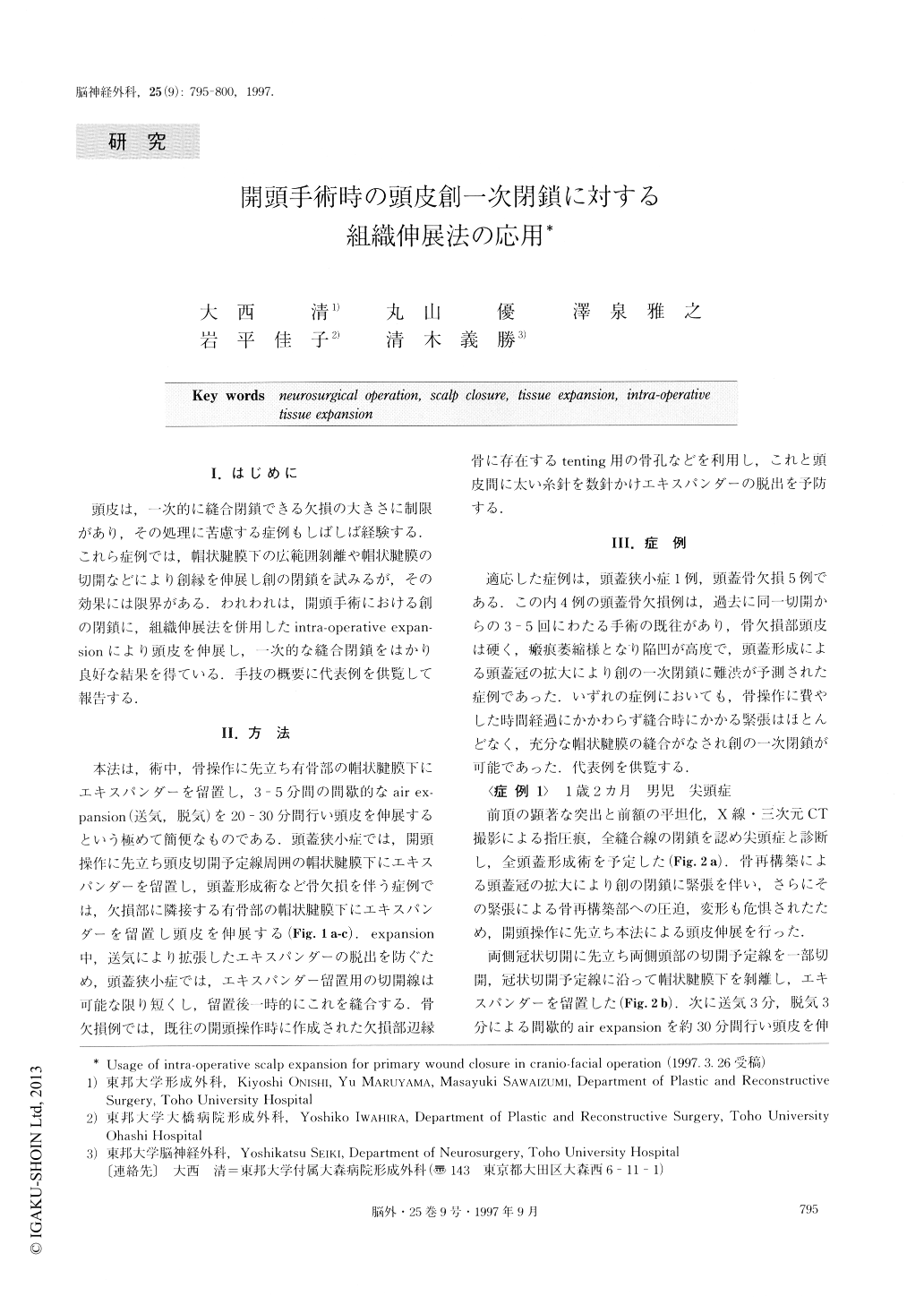Japanese
English
- 有料閲覧
- Abstract 文献概要
- 1ページ目 Look Inside
I.はじめに
頭皮は,一次的に縫合閉鎖できる欠損の大きさに制限があり,その処理に苦慮する症例もしばしば経験する.これら症例では,帽状腱膜下の広範囲剥離や帽状腱膜の切開などにより創縁を伸展し創の閉鎖を試みるが,その効果には限界がある.われわれは,開頭手術における創の閉鎖に,組織伸展法を併用したintra-operative expan—sionにより頭皮を伸展し,一次的な縫合閉鎖をはかり良好な結果を得ている.手技の概要に代表例を供覧して報告する.
The size of defects in scalp for which primary wound closure can be applied is limited. Cases with a scalp de-fect for which primary wound closure is difficult to per-form are frequently seen. In these cases, an attempt is made to close the wound by extending the margin of an incision produced by extensive subgaleal undermin-ing or galeal incisions. However, its effectiveness is li-mited. We performed in such cases intra-operative scalpexpansion with a tissue expander for primary wound closure, and this technique has yielded good results.
A case with craniosynostosis and five cases with cra-nioplasty received this procedure. Four of these cases had a previous history of undergoing surgery for carva-rial bone defect three to five times from the same inci-sion. The scalp at the carvarial bone defect had a scar and was atrophic with great depression. It was ex-pected that the expansion of cranium resulting from cranioplasty would make it difficult to perform primary wound closure. During the surgery, a tissue expander was placed subgaleally in an osseous area prior to the bone operation, and intermittent air expansion was car-ried out for 20 to 30 minutes by means of air inflation and deflation to expand the scalp. In all of these cases little tension was generated by the wound closure de-spite the lapse of time during the bone operation. In consequence, primary wound closure was accomplished easily, and the reliable closure of the galea made it pos-sible to prevent the scar widening.
This is a simple and easy technique combining prim-ary wound closure of the scalp with intra-operative scalp expansion. We believe that the technique should be considered for cases for whom primary closure of compression deformity is difficult or in whom there is a wound at the carvarial reconstruction site. The techni-que and typical cases are reported.

Copyright © 1997, Igaku-Shoin Ltd. All rights reserved.


